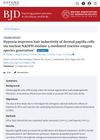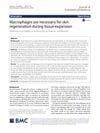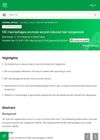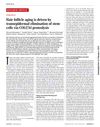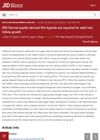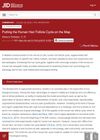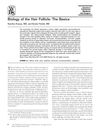Intrinsic ROS Drive Hair Follicle Cycle Progression by Modulating DNA Damage and Repair and Subsequently Hair Follicle Apoptosis and Macrophage Polarization
January 2022
in “
Oxidative Medicine and Cellular Longevity
”
TLDR Reactive oxygen species (ROS) influence hair growth by causing DNA damage, cell death, and changes in immune cells.
The study investigated the role of intrinsic reactive oxygen species (ROS) in hair follicle (HF) cycle progression, particularly during the transition from anagen to catagen. It was found that increased ROS levels led to DNA damage and repair, which subsequently enhanced apoptosis in HFs. The study highlighted the involvement of apoptosis-inducing factor (AIF) and poly [ADP-ribose] polymerase 1 (PARP1) in HF apoptosis, with PARP1 acting as a key regulator. Treatment with PARP1 and caspase-3 inhibitors demonstrated a seesaw relationship between cytochrome c-caspase-3- and AIF-PARP1-mediated apoptosis. Additionally, macrophage polarization was observed, with M1 macrophages increasing during catagen and M2 macrophages during anagen and telogen. The findings suggested that ROS, DNA damage and repair, apoptosis, and macrophage polarization collectively influenced HF cycle progression.

